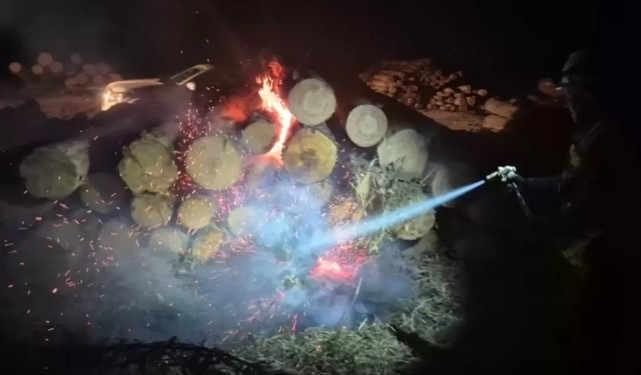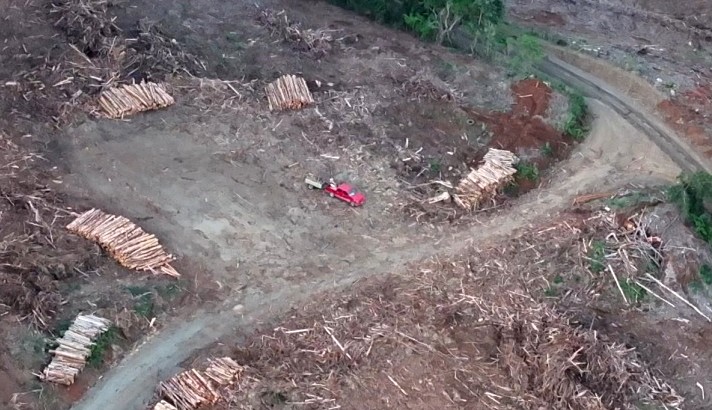Flora of Biobío: Work by UdeC Specialists Provides Keys to Identifying Plants of the Region
With ecosystems ranging from Mediterranean environments, typical of central Chile, to temperate ones like those in the south of the country, the Biobío Region is a remarkable space from the perspective of its plant diversity.
This richness is reflected in nearly 1,500 species of wild vascular plants, of which 1,110 are native and 383 are non-native, either naturalized or adventive.
Among the native species, there are 331 endemic species and 779 plants that are also found in other South American countries and around the world.
This is the result of a project carried out by the University of Concepción, which brings to life the Flora of the Biobío Region, a guide for identifying species—a 600-plus-page text set to be presented on July 10.
Its authors include researcher Dr. Sebastián Teillier Arredondo from the Institute of Ecology and Biodiversity (IEB); the Director and Curator of the UdeC Herbarium (CONC), Dr. Carlos Baeza Perry and Alicia Marticorena Garri; and naturalist photographer Eitel Thielemann (✝2024).
The text contains around a thousand photographs and 400 illustrations, along with key data for recognizing the plants growing in the region. It also includes a historical account of studies on Biobío's flora and a general description of local vegetation, emphasizing the best-preserved remnants and threatened species.
It covers various types of forests (sclerophyllous, deciduous, evergreen, and montane) as well as Andean vegetation, dunes, and wetlands.
The list of species featured in the book was compiled from databases such as the New Flora of Chile, the Herbarium of the Department of Botany, the Darwinion Botanical Institute (Argentina), the herbarium of the National Museum of Natural History in Santiago, and a review of various taxonomic and phytogeographic literature.
This was complemented with field visits across different parts of the region to update and expand existing information.
"The choice of locations was based on photographing flora from the Laja River sandbanks or supplementing studies in well-preserved areas like Nonguén National Park, the upper Laja region, Laguna del Laja National Park, and Pichachén Pass, as well as Alto Biobío and the National Park, to further flora studies and photograph species," explains Sebastián Teillier.
Fieldwork was also conducted in coastal areas such as Tumbes, the mouth of the Biobío River, Chome Cove, Rocuant Island, among others, adds the botanist, who is currently affiliated with the CONC Herbarium through the New Flora of Chile and Biodata projects (the latter aiming to digitize UdeC's botanical collections).
"During these field trips, which took place in all seasons, we encountered some surprises, such as finding species not previously recorded for the area. That was a valuable contribution, and the most interesting part was also observing where plants are growing now," remarks Dr. Carlos Baeza.
For the academic, this work—which he considers groundbreaking as the first of its kind for the region—condenses the historical contributions of various researchers to botanical knowledge at UdeC.
"We are just the tip of the iceberg because the major work was done by colleagues who left their legacy in the Herbarium. So, this book is a tribute to the 100 years of UdeC's plant collections," says the specialist in Vascular Plant Systematics.
The Herbarium curator believes this text fulfills a debt to the region by making accessible information about regional vegetation available to diverse audiences.
"We have a strong, prominent Botany department, yet we hadn't produced something that showcased it and served not just botanists but also zoologists, for instance, who need to know which plant hosts their insect, or ecologists, those working in natural medicine, or consultants. We owed this to the region and the country," the academic states.
This work is not only intended for professionals studying flora and vegetation, managing plant resources, or working in landscaping but also for students at various levels and anyone interested in learning or deepening their knowledge about plants.
The book is the second to comprehensively address the vascular flora of a specific area in the country, following the Flora of the Metropolitan Region of Santiago, released in 2022.
Source:Diario Concepción

















